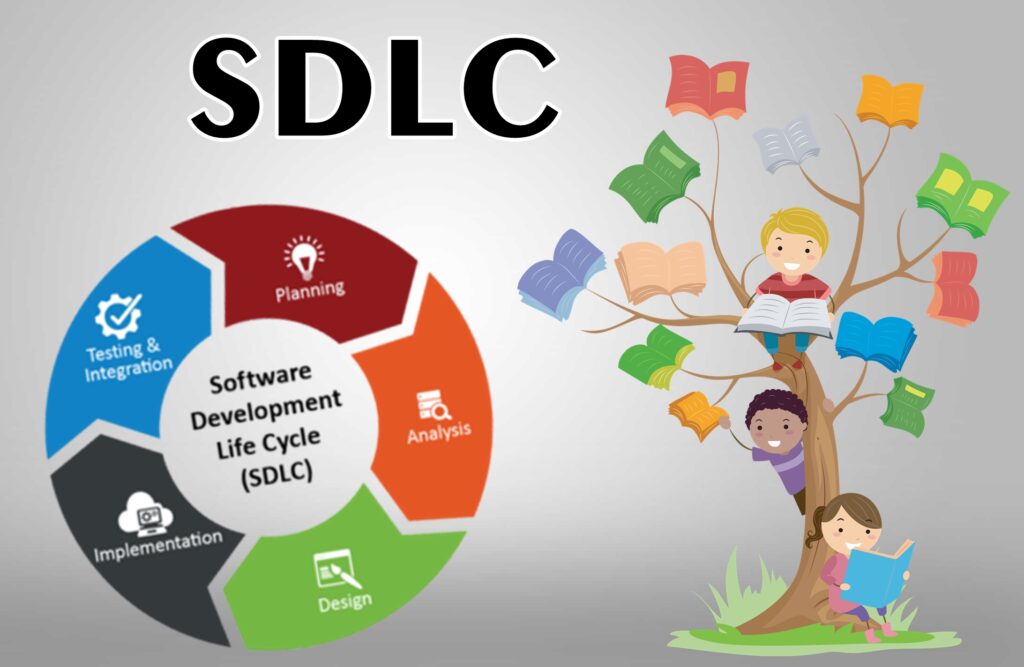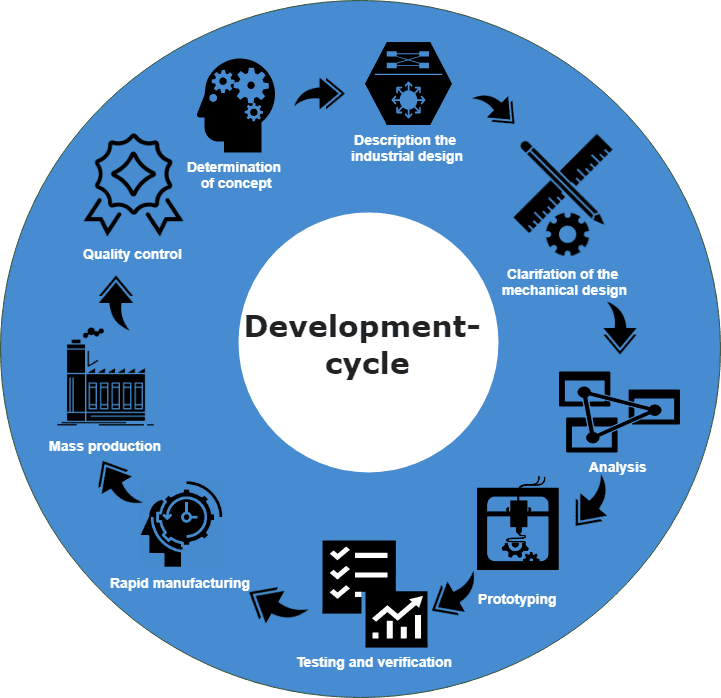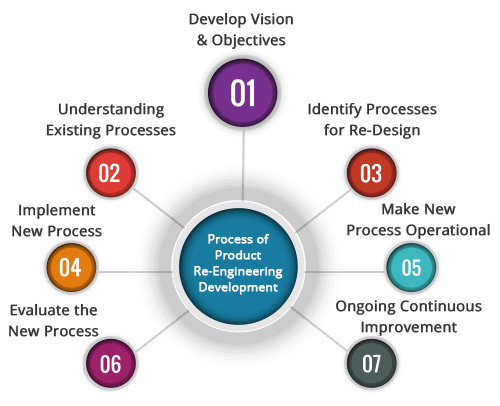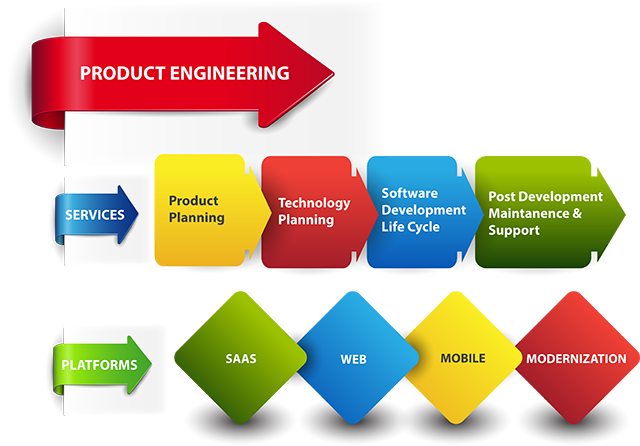Software Product Engineering
The global Offshore Product Development (OPD) space acknowledges Spinacia Tech as a trusted name. We offer end-to-end software product engineering services that help you constantly innovate, optimize time-to-market and gain a competitive edge on new and legacy product portfolios at reduced costs.
Software Development Services
Spinacia Tech believes that software development should not be restricted to code creation and project delivery. It is inclusive of an accurate comprehension of the client’s requirements and business goals and, on the basis of this comprehension, recommendations of a cost-effective solution with a fine blend of technology are provided. Spinacia Tech’s highly effective solution recommendations and technology proficiency have made its software development services stand apart from its peers.

Spinacia Tech has supported numerous clients in various product life cycle phases to accomplish their product goals. We, at Spinacia Tech, have the expertise to begin the project from any of the following stages of product life cycle management:
- Business Requirement Analysis
- Ideation and conceptualization
- Architecture, R&D, and prototyping
- Design and development
- Testing and assurance
- Release management
- Training and product support
- Sustenance/maintenance

Taking into account the client’s project requirements and interests, Spinacia Tech has adopted many successful software development approaches. We are well conversant with the classic software development life cycle and the Agile methodology as well.
When Spinacia Tech adheres to the conventional Waterfall methodology, the following phases are implemented: requirements and analysis, design, implementation, and eventually, testing. All these phases have specific entry and exit criteria. When the stakeholders approve a phase and its deliverables, transition takes place from one phase to the next.
Spinacia Tech is a pioneer of the collaborative software development methodology. Herein, the client retains its own onsite team, and Spinacia Tech’s offshore product development team becomes an extension of this onsite team. These two teams collaborate to attain a common goal. Spinacia Tech streamlines and synchronizes the processes essential for this collaboration. In this regard, Spinacia Tech has implemented the Agile methodology with a highly responsive approach for numerous clients.
Considerations
- Business problem definition
- Product development objective
- Stakeholder viewpoint
- Onsite-offshore knowledge transition and requirements gathering
Implementation
- Assemble project team
- Knowledge transition
- Define project execution strategies and communication channel
- Customize offshore process
- Execute offshore project
- Review deliverables and identify areas of improvement
Execution
- Project charter and business case
- Documentation of user, functional, and system requirements
- Top-level architecture, technical approach, and system design
- System decomposition into component and unit specifications and design
- Coding, unit test planning, and unit testing
- Generation of test data for unit testing and system testing
- System integration and testing
- Implementation, delivery, and cut-over
These phases are aimed at helping Spinacia Tech comprehend the company standards, business practices, client requirements, specific IT system environments, and the approach to be followed. The offshore team definitely experiences this comprehension as a learning curve.
We take into account the client-specific requirements and customize the operational methodology accordingly.
Simultaneously, we collaborate with the client to improve the business processes and efficiency. For this, we utilize our past operational experience to recommend the best practices.
Software Product Development Life Cycle Practices: We have a thorough understanding of the challenges encountered during software development in various technologies and the established processes and practices required to attain success. To choose the optimum process for projects, we consider points such as type, scope, complexity, technology, and timeline. During a typical software development life cycle, we adhere to the following practices:
Requirements engineering
- Vision statement
- Elicitation and prioritization of requirements
- Knowledge acquisition and management
- Feasibility study or risk analysis
- Functional and non-functional requirements
- Safety, security, and performance requirements
- Buy-in, validation, and approval of requirements
- Tracing and change control of requirements
Prototyping
We believe that creating a working prototype helps in collecting further requirements from the stakeholders and also enables them to comprehend the system. It also helps in reassuring ideas and defining the go to market (GTM) feasibility.
Our emerging technology expertise and architectural services capability facilitate prototyping; selection of tools, technology, and framework; and defining of benchmarks. Moreover, this prototyping exercise also considerably decreases requirements and design errors, including UI errors.
Architecture and design
The key is as follows: selection of appropriate architecture for the application, a good design of the application, and finally, a good representation of the design. Our design team is equipped with extensive knowledge and understanding of industry-standard architectures and best practices. The team adheres to the following fundamental principles:
- Good designs require in-depth application domain knowledge
- Only what is hidden can be changed without risk (hence, it is important to expose interfaces and hide implementations)
- Separation of concerns leads to standard architectures
- Reusing designs through patterns yields faster implementation and better maintenance.
- The output of design activity is a technical plan or blueprint of a system that helps the developers construct the system.
System construction
A set of activities that transform a design into a running system is termed as ‘construction’. This phase requires the engineering teams to adhere to the following principles:
- Well-structured programs have fewer errors and are easier to maintain
- Software reuse decreases cycle time and increases quality and productivity
- Adherence to Agile methodology decreases the effect of change in requirements
We emphasize robust coding standards, useful code comments, and extensive unit testing during the course of system construction. We urge our teams to practice test-driven development, continuous integration, and short build cycles.
Review and verification
We believe that error prevention is better than error removal. This implies that inspections result in significantly increased productivity, quality, and project stability. Therefore, our construction phase is composed of review and inspection of the design and code. During review, if some issues are identified, we amend them. To avoid repetition of identical errors, we share the learning across the team.
Testing and Quality Assurance
Testing is an integral part of the software development process. Our project plan is accompanied by a test plan. We develop test cases during the designing and coding of an application.
To ensure that the delivered system is of the best quality, we promote random testing and bug bashes. The basic principle behind these activities is that ‘formal testing can show the presence of errors, but not their absence’.
Governance
During all phases of software development, we continually monitor the progress of our efforts and tune our processes. These activities encompass project management, configuration management, requirements and change management, and quality and defect management.
Our extensive use of Software Application Lifecycle Management (ALM) helps us track and monitor the different areas of requirement management, software architecture, development, software testing, software maintenance, change management, continuous integration, and release management.
Software Maintenance Services
In the current environment, business practices, policies, and execution methodologies keep undergoing changes even as newer and better technologies emerge. In such a scenario, one of the biggest challenges faced by organizations is to manage IT well enough to keep it in sync with the business, while capitalizing on current assets.
Software maintenance is one of the important phases of a software product lifecycle. It represents the improvements made to the existing software to provide a competitive edge in any industry. Spinacia Tech helps you in accomplishing the task with its proven approaches to application/product maintenance through maintenance or end-client-specific releases. The range of these software maintenance activities is from small fixes for existing defects to the implementation of new business rules in an established product.
Spinacia Tech executes well-planned knowledge transition and product ramp-up processes to confirm that the offshore team completely understands the client’s product and business standpoint. If any changes are proposed to a system, Spinacia Tech does the impact analysis of these changes using its proven skills. The outcome of this analysis is used to project the propagated effects to the other parts of the system. In any maintenance project, the impact analysis phase is important because it helps comprehend the effect of the design change and release on the product. Consequently, the client can make an informed decision regarding the implementation of any change.
Categories
- Offshore and onsite maintenance
- Bug fixing and troubleshooting
- Bug tracking and reporting
- Fine-tuning of the product functionality
- Research, design, and implementation of new features
Considerations
- The performance of the software must be maintained (perfective maintenance)
- The errors in specifications, design and implementation must be corrected
- The final product must also evolve to existence (evolution maintenance)
Software and Application Re-Engineering Services

Any established product becomes obsolete with the passage of time. Such a product needs continual product support and upgrades, which can be both difficult and expensive. The solution is to build a product for a wide segment of potential consumers. Consequently, several business owners aim the migration of their products to mainstream technology and a newer platform.
To help organizations attain their business goals, we capitalize on our extensive experience of application re-engineering. Spinacia Tech has a proven software re-engineering methodology that appraises the investments in legacy systems by carefully analyzing the legacy application set and business logic, and then mining with a tool-based approach. Our re-engineering methodology comprises data migration, a technology migration system using tool-based reverse engineering, and forward engineering.
All these ensure a smooth transition process.
Categories
- Re-architecting
- Migration to a new software delivery model (such as Software as a Service (SaaS), Platform as a Service (Paas), and Delivery over cloud)
- Technology and user interface upgrade
- Porting and data migration
- Legacy systems and application re-engineering
- Enterprise application integration
- Code restructuring
- Re-documentation
- Platform transition
- Language conversion
Considerations
- Business problems with the current mode of operation
- Future business goals post-migration
- Procedures served by the re-engineered application
- Stakeholders’ opinion about the advantages of the effort
Implementation: How we proceed with the implementation
- Assessment of the product to be migrated
- Knowledge transfer
- Research on the platform and technology to be supported and technology selection
- Research on the data domain and creation of detailed specifications for the project
- System planning (selection of the architecture, and creation of interaction protocols and technical specifications for separate modules) and prototyping
- System implementation (system specifications, construction, and QA)
- Creation of project documentation (system architecture and source code description, in addition to built-in comments in code)
- New system optimization and tuning
The initial step is to complete the pre-migration assessment. Then, the team works on the specification with a broad software development approach and methodology to deliver the product.

